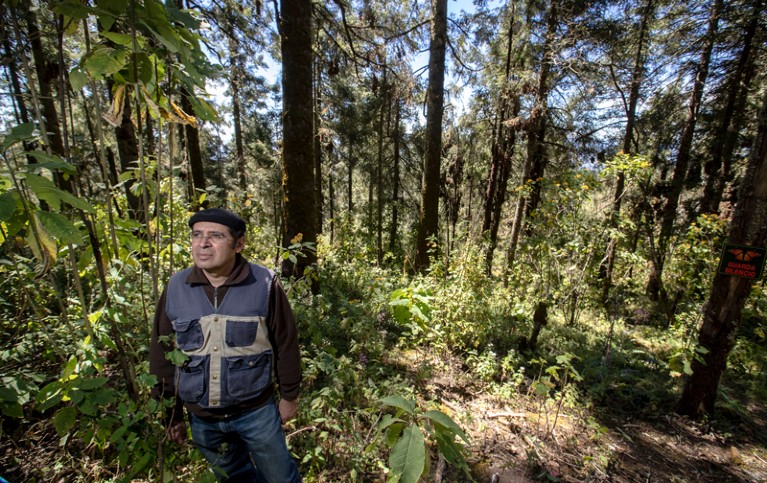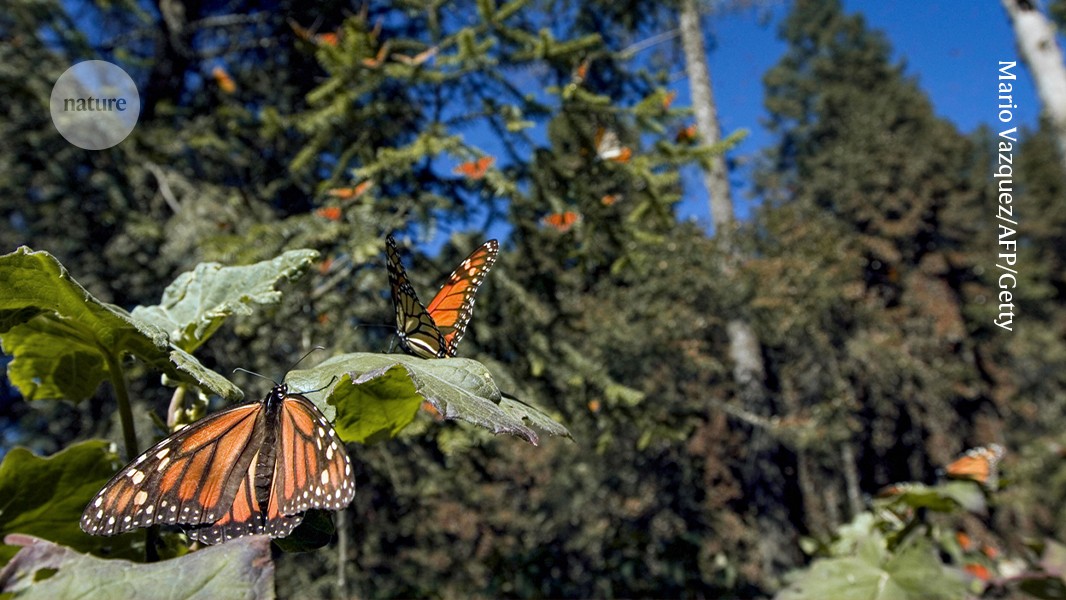Researchers in central Mexico have planted a forest of firs. Now they’re hoping the imperiled Eastern monarch butterflies will come.
Almost 1,000 oyamel firs
(Abies religiosa)
have been transplanted to a mountain in Michoacán, where they are growing at elevations beyond what was considered the species’ upper limit
1
. If the trees survive over the next few decades, they could help to shield the migratory eastern population of monarch butterflies (
Danaus plexippus
), which spend the winter roosting in oyamel fir forests, from the impacts of climate change.
This population of monarchs, which migrates up to 4,500 kilometres from the United States and Canada to Mexico, has declined dramatically since the 1990s, owing to climate change and habitat destruction.
Part of the butterflies’ remaining habitat — the fir trees in the Monarch Butterfly Biosphere Reserve in Michoacán — is slowly shifting upwards as the climate warms. But the firs will eventually “run out of mountain”, says Cuauhtémoc Sáenz-Romero, a forest geneticist at the Michoacan University of Saint Nicholas of Hidalgo in Morelia, Mexico, and the lead author of the study, which was published in
Frontiers in Forests and Global Change
this week.
Relocation project
To test whether the butterfly habitat could be relocated in the reserve, Sáenz-Romero and his colleagues
shifted hundreds of seedlings up a mountainside
by 400 metres several years ago. Since then, they have launched a pilot project on Nevado de Toluca — a nearby mountain that crests roughly 1,000 metres higher than the reserve. Local rangers discovered a new colony of butterflies wintering there in 2019, which suggests that it could be a suitable site to create a new habitat, Sáenz-Romero says.

Forest geneticist Cuauhtémoc Sáenz-Romero leads a team that have relocated firs in an attempt to save the butterflies.
Credit: Brian van der Brug/Los Angeles Times/Getty
The researchers grew nearly 1,000 oyamel fir saplings, and planted them at four elevations in circles beneath shrubs, which provide shade and protection. They then measured the firs’ survival and growth after three growing seasons.
The natural elevation limit for the fir was thought to be around 3,550 metres. But the team found that 68% of saplings planted at 3,800 metres survived, as did 44% of those planted at 4,000 metres — the two highest elevations. They did, however, grow more slowly than those planted at the two lower altitudes.
John Pleasants, an ecologist at Iowa State University in Ames, says that this feasibility study has great significance. It would require lot of effort to plant enough trees to provide refuge for the butterflies, “but that may be the only choice down the road,” he says.
Growing milkweed (
Asclepias
) and nectar plant species east of the Rocky Mountains and reducing pesticide use are also important for butterflies’ survival, says Sáenz-Romero, but such strategies are “not enough” to save them from climate change. He estimates that at least 5,000 trees would need to reach maturity in central Mexico’s higher elevations by the 2060s to ensure that the eastern monarchs have a winter home.


